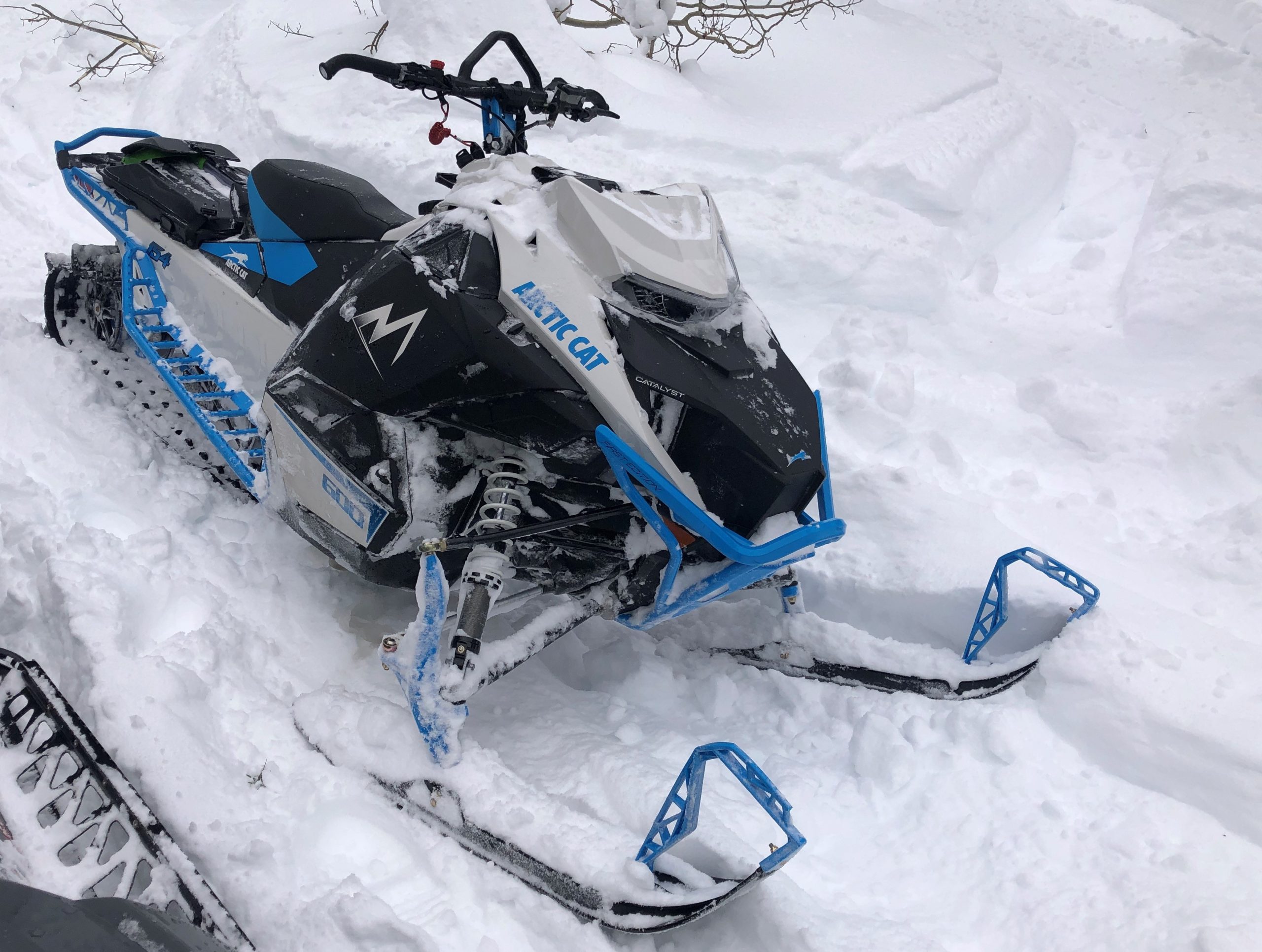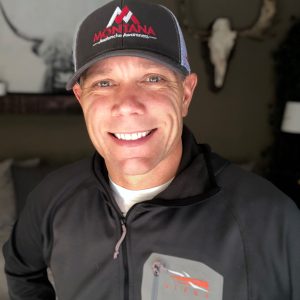Table of contents
Toggle- M8000 Hardcore Alpha One – The Baseline of Comparison
- The First Few Turns
- The Catalyst Design
- Weight Reduction
- Electric Start
- Weight Centralization
- Durability
- 600 C-Tec2 Laydown Engine
- Why Not a Larger Motor?
- Steering
- Alpha One Single Beam and Suspension
- Additional Catalyst M600 Engineering Features
- New Features
- Here are more articles on Arctic Cat:
Arctic Cat’s new Catalyst platform in the M600 package is, in a couple of words, mind-blowing! When a new chassis comes from a manufacturer, we always hope that it has the “wow factor”. Many times, the new chassis is a slightly more refined version of the last. That’s not the case with the Catalyst M600. It definitely has the “wow factor”. As you look over the sled, there are innovative design features everywhere you look. What surprised me most about the Catalyst M600 was that it doesn’t feel anything like the current Arctic Cat Ascender platform. The weight, handling, balance, and playfulness are better in every way. It’s extremely playful, and nicely balanced while giving the rider maximum control and confidence, the handling characteristics riders are looking for when buying a mountain machine.
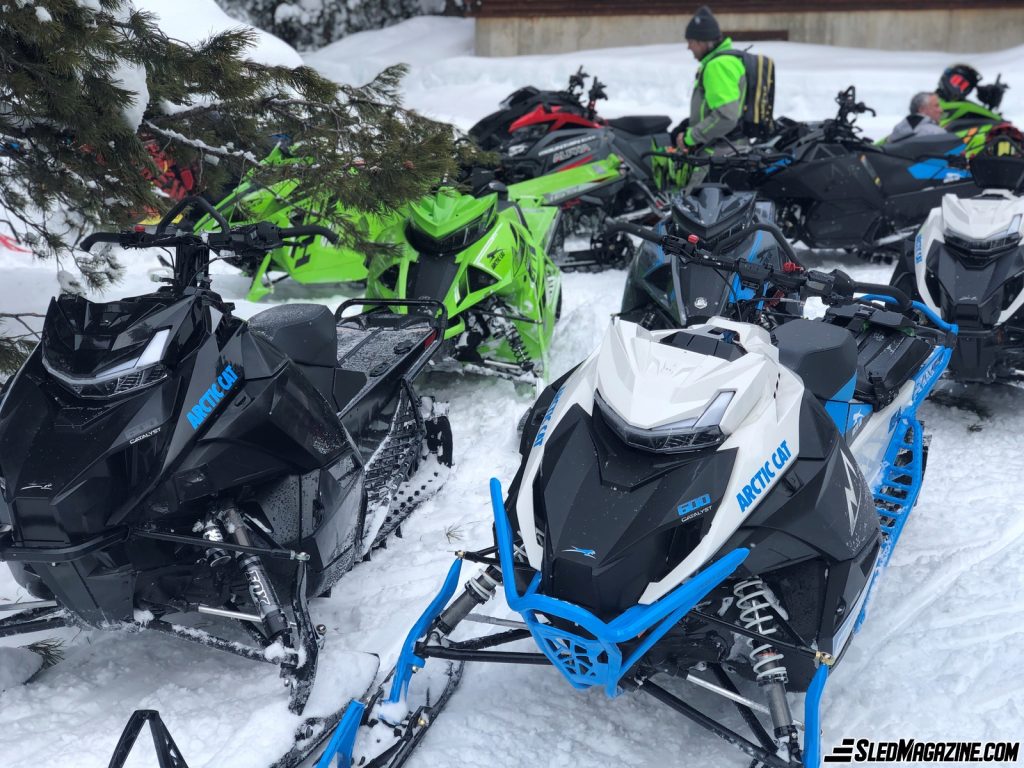
M8000 Hardcore Alpha One – The Baseline of Comparison
Because the Catalyst M600 units we tested were prototypes, and hand-built, we only had three to share between the media groups. To get a good baseline for comparison, I initially jumped on a 2023 M8000 Hardcore Alpha One, one of Arctic Cat’s current premium mountain offerings. I rode it in our first off-trail mountain section, up a creek bottom and in an area that was sparsely treed. As we kept riding further up the drainage the area became steeper and looked to be untouched for at least the last few storms. The stage was now set, we were in the perfect place to compare the capability and handling of the Catalyst M600 to the M8000 Hardcore Alpha One.
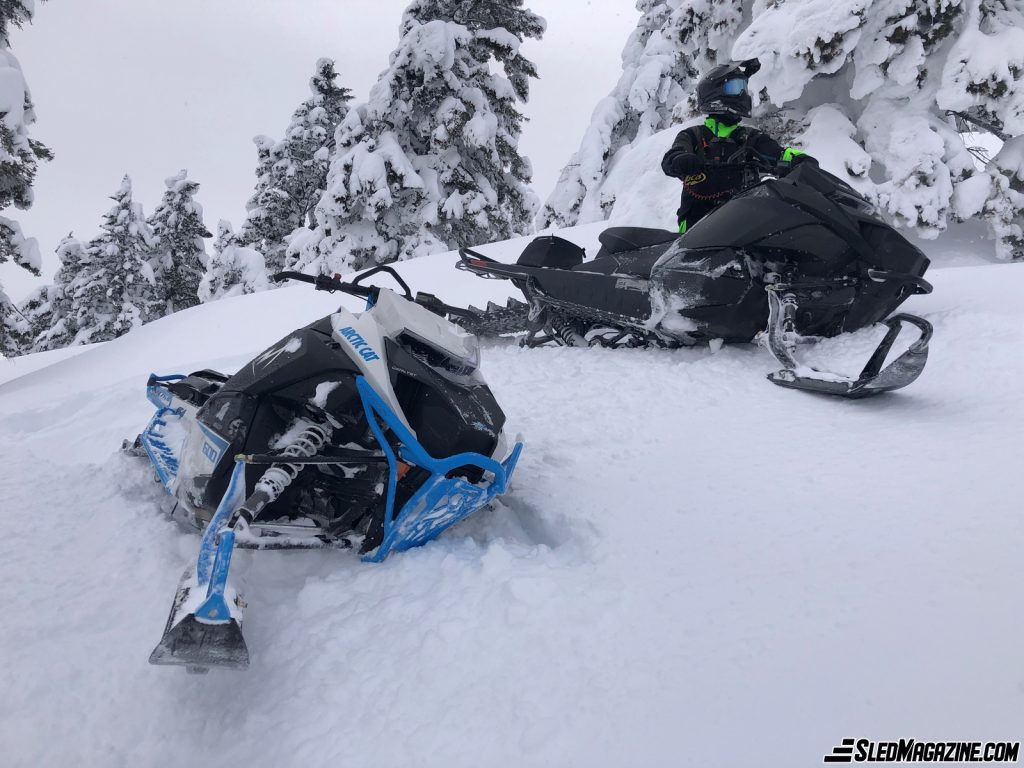
The First Few Turns
When I start riding the new Catalyst M600 platform, I could immediately feel the immense difference. It feels extremely light, comes up on edge easily and has what feels like a very large side hill balance point. Many sleds have a small balance point. The rider then must manage to hold a side hill in that narrow balance point area by turning the skis and constantly shifting their weight. That takes focus and energy. Not the Catalyst M600, it came up on edge extremely easily and held a side hill with ease.
When side hilling, I never felt the need to have to commit to one side or go the wrong foot forward. I could stay neutral on the sled with one foot on each running board and be totally in control. While riding in the neutral position I was confident even in steeper zones with trees and crossing tracks from other riders. The Catalyst M600 was clearly outperforming the M8000 Hardcore Alpha One.
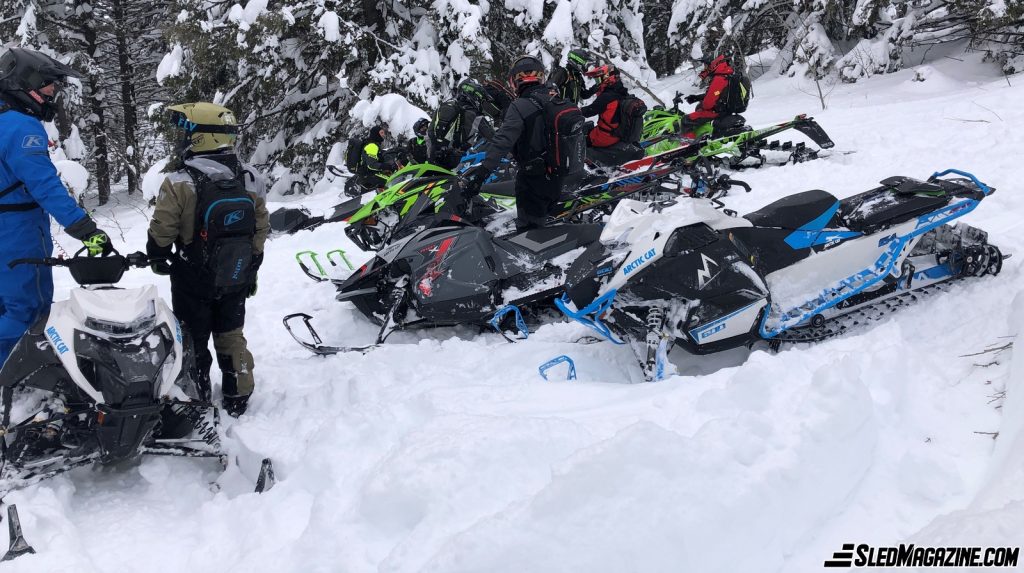
The Catalyst Design
When developing the Catalyst, Arctic Cat’s engineers had a few main focuses with chassis redesign, weight reduction, weight centralization and maintaining the durability Arctic Cat is known for. Saying the redesign was focused, doesn’t mean not much got changed. In fact, almost every part of the M600 is new and specifically designed for the Catalyst platform. The Arctic Cat engineers told us that the only shared parts from the Ascender platform were the handlebars and controls, skis, track driver, bushings, secondary clutch, and brake caliper.
The M600 was also specifically designed and engineered to be a mountain sled. Arctic Cat didn’t just take trail and crossover parts and modify them to work for a mountain sled. They specifically designed the parts of the M600 to perform best as a mountain sled. When you’re riding it, you can feel the focus and design of this sled was to be great in the mountains.
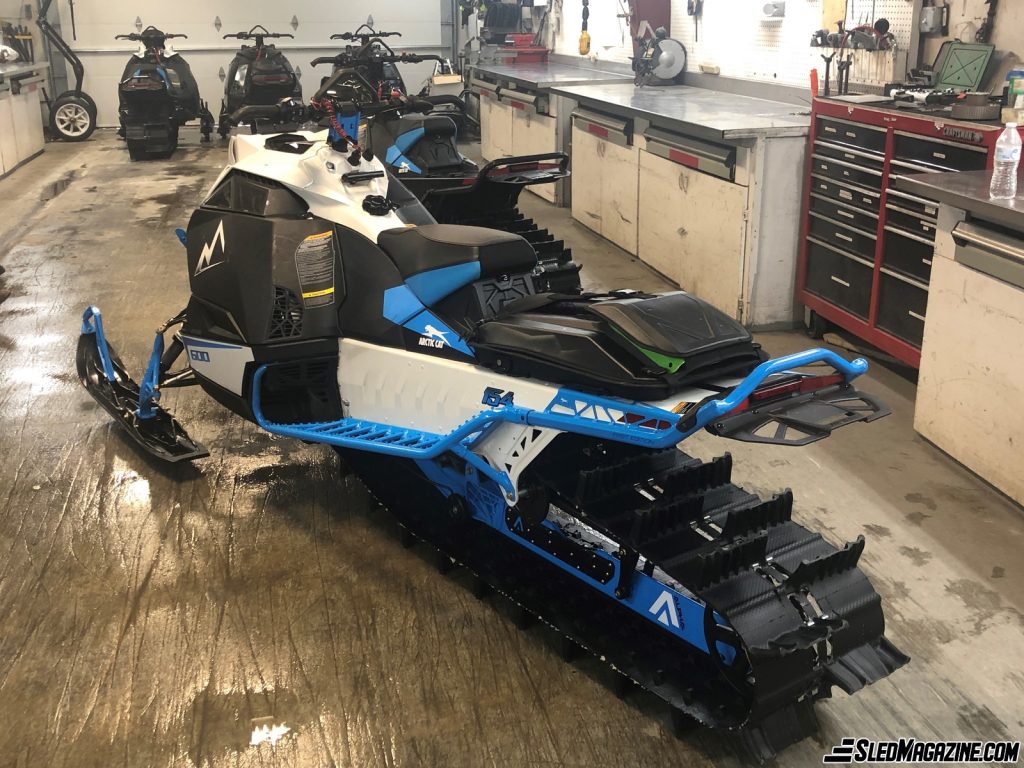
Weight Reduction
Since the first Catalyst prototype was started back in 2018-19, during the design phase, every part of the Catalyst platform was looked at, scrutinized, and designed to reduce weight and improve strength. Many parts are now doing multiple jobs, making the chassis stronger and lighter at the same time. When the Catalyst platform was released at Hay Days in September, Arctic Cat claimed a 10% weight reduction of their new models. It sounds like the weight savings will be more than that on their trail and crossover models but come up a little short of the 10% on the M600. It’s hard for a manufacturer to pin down an exact number when they’re still in the Prototype and preproduction stages.
Weight reduction has been a focus of Arctic Cat’s Mountain division for many years, continuing to shave pounds and make their current Ascender platform lighter for their customers. That’s the main reason getting to the 10% weight reduction mark is so difficult on the Catalyst M600. As an example of the weight reduction for the M600, the electrical system was redesigned to reduce weight and routed to keep the mass more centralized. By doing this, Arctic Cat removed 154 feet of wire totalling 1.4 pounds of weight reduction in wiring alone. Most of the Catalyst M600 weight reduction comes from a new belt drive system, air intake redesign, reduction in plastics, redesigned fuel tank and a lightweight seat.
Electric Start
All the Catalyst M600 sleds we tested were equipped with an electric start. The electric start package on the M600 weighs in at around 22 lbs. I know what you’re thinking; 22 lbs is a lot of weight and should be noticeable – and I agree. Here’s the crazy part – you couldn’t feel the extra 22 lbs at all. Now for the exciting part. The Catalyst M600 already feels extremely light and nimble, so much so that you don’t notice 22 lbs of electric start. If you’re like most mountain riders and not interested in the electric start, imagine how light the M600 will feel when you remove that much weight from an already extremely light sled.
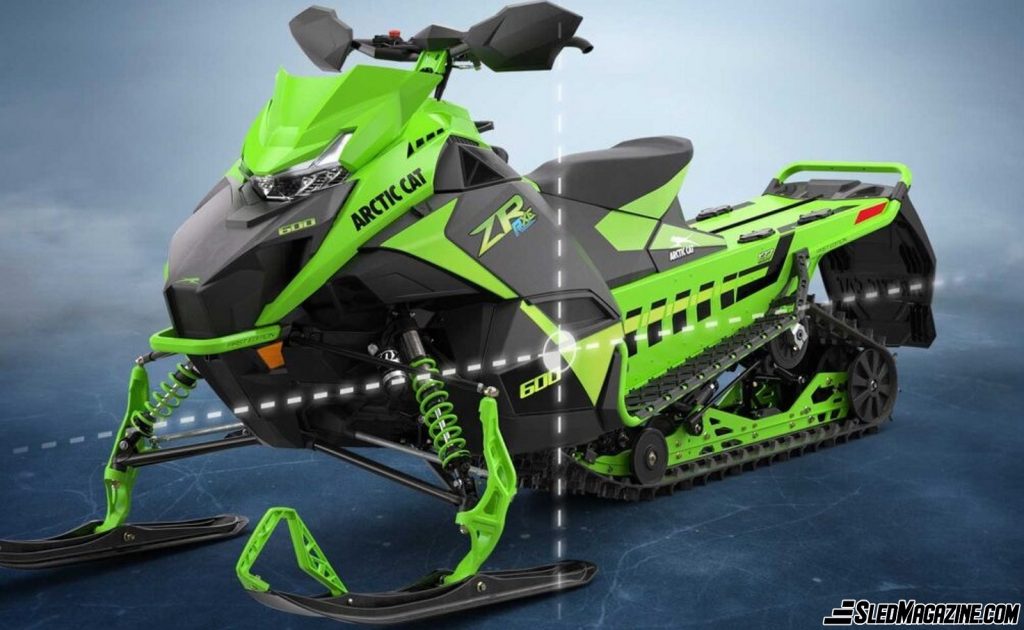
Weight Centralization
Arctic Cat’s design team not only focused on reducing the weight of the Catalyst but maybe most importantly, centralizing the weight. This helps the sled feel more balanced and gives it a more responsive feel. The motor has a patented lay-down design that allows the engine to be mounted 1” lower and 1” closer to the rider. Even though an inch doesn’t seem like much, this results in a lower center of gravity and puts the engine in a more centralized location for a better balance of the sled.
The airbox has also been moved to the front of the sled. By moving the air box, the 10.5-gallon fuel tank doesn’t have to be designed around the air intake system or stretched down the tunnel to get the volume it needs. The fuel tank can now be more centralized on the sled. Weight Centralization might sound like a typical marketing buzzword. However, when you’re riding off-trail in the mountains, all the changes Arctic Cat did to centralize the weight are a big deal. You really notice how easy it is to carve and control the sled as you ride, with the mass more centralized on the chassis.
Durability
Arctic Cat’s cross-country race experience, known to punish sleds and push them to the limits inspired the durability of the redesign. The engineers from Arctic Cat told us that they didn’t want to compromise on durability as they lightened and redesigned parts to develop the Catalyst platform. So, last season they put the Catalyst design to the test. They made a 6-mile off-trail test loop in the mountains of Montana and in 3.5 days put on 1500 miles by only adding gas and oil. That’s a testament to the durability of the new Catalyst platform.
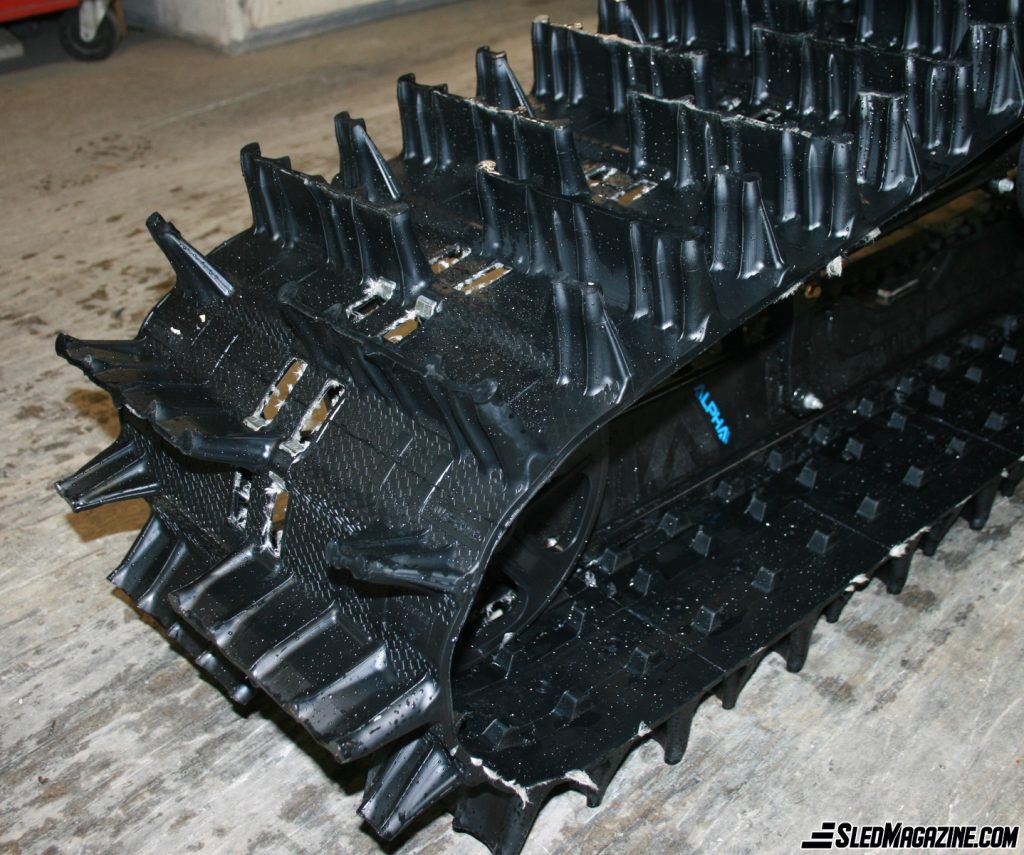
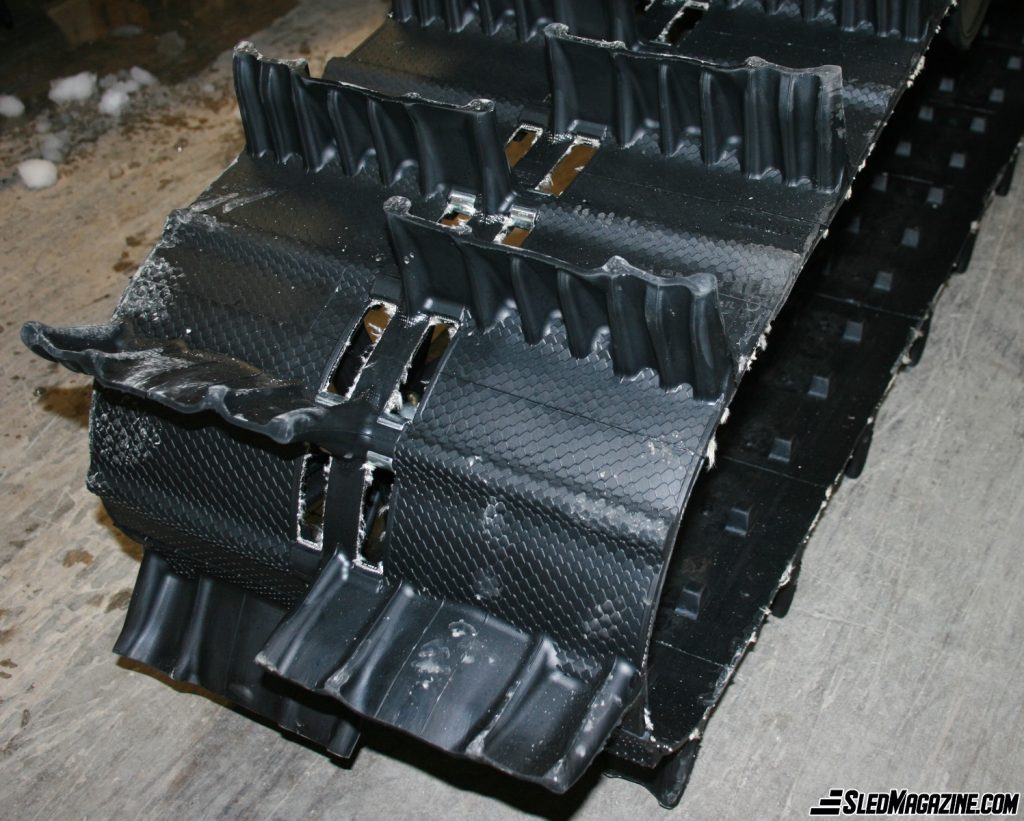
Catalyst M600 Track and Length Options
The M600 will come in two track options (2.6” and 3.0” PowerClaw), and two lengths (146” and 154”), for three total options. The main difference in the tracks is the 3.0” has a deeper lug and is 10 lbs lighter than the 2.6”. Therefore, the 2.6” would probably work slightly better in set-up or late-season snow and is probably a better option for a combination of on and off-trail riding. In my opinion, the 3.0” was the clear winner in the soft, deep snow that we were riding in.
The 3.0” had better traction in the deep snow, didn’t trench and is 10lbs lighter. It would be the track I would choose if I was buying an M600. We didn’t get a chance to try the M600 in the 146” length with the 2.6” track at the test ride because it wasn’t available, so I can’t speak on that setup. The model year 2024 Catalyst M600 length and track options are:
- 15”x146”x2.6” PowerClaw
- 15”x154”x2.6” PowerClaw
- 15”x154”x3.0” PowerClaw
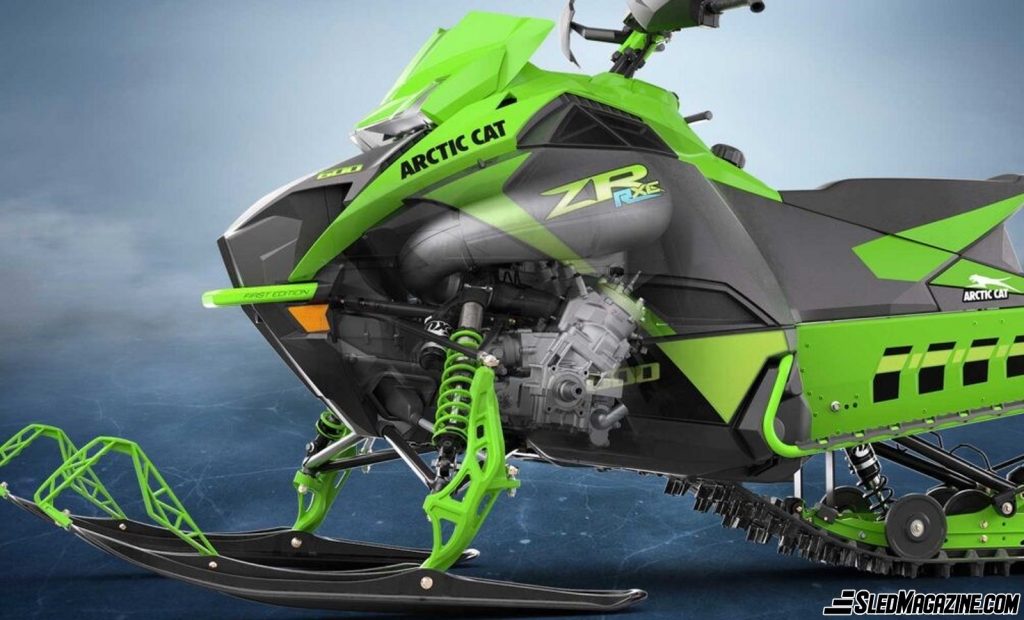
600 C-Tec2 Laydown Engine
Arctic Cat releasing the Catalyst with only a 600cc engine option seems to be a point of contention for many buyers but especially those looking to buy the M600 for riding in the mountains. The 600 C-Tec2 engine is a performer and has been modified and enhanced with a more durable crankshaft, higher resolution flywheel, optimized fuel management system and revised exhaust servo. It performed well, especially for a 600cc motor in the 125hp range and pushed the M600 around with ease in the mountains and deep snow at 7500 ft to 8000 ft elevation. I was very impressed at how fun and playful the total M600 package was in the tight, and technical sections.
Will the 600 C-Tec2 outgun the 850 turbos and the big bores in the big, open climbs? No, of course not, but I think the M600 will give the big horsepower sleds a run for their money in the tight, technical sections because of how well it handles.

Why Not a Larger Motor?
Many are asking, why didn’t Arctic Cat release a larger motor with the new Catalyst Platform. Arctic Cat engineers said there were a few reasons for this decision. The main one was that with the new laydown motor design, they didn’t want to rush the larger displacement motor. There were so many changes involved with the new Catalyst Chassis, the lay-down engine design, and all the new motor parts. Covid is also still creating some supply chain issues, so they didn’t want to take on too much by having two engine packages. Arctic Cat didn’t give specifics but did give a little bit of a teaser in the engine department. For the model year 2025, they will have a larger displacement engine option for the Catalyst platform.
Steering
One of the first things you notice when you ride the Catalyst M600 is how light and responsive the steering feels. The steering post was redesigned, and the linkage was removed. Now, the steering post doesn’t have to elbow around the motor because the motor is lower and out of the way. With the removal of the linkage, the steering has drastically improved and the steering of the M600 is much easier and more responsive. Steering the M600 takes way less effort than the Ascender platform, it’s not just a little easier to steer, it’s a lot easier to steer. The M600 also comes with an adjustable 36” AWS-Arctic Wish Bone Suspension and slightly taller spindles.
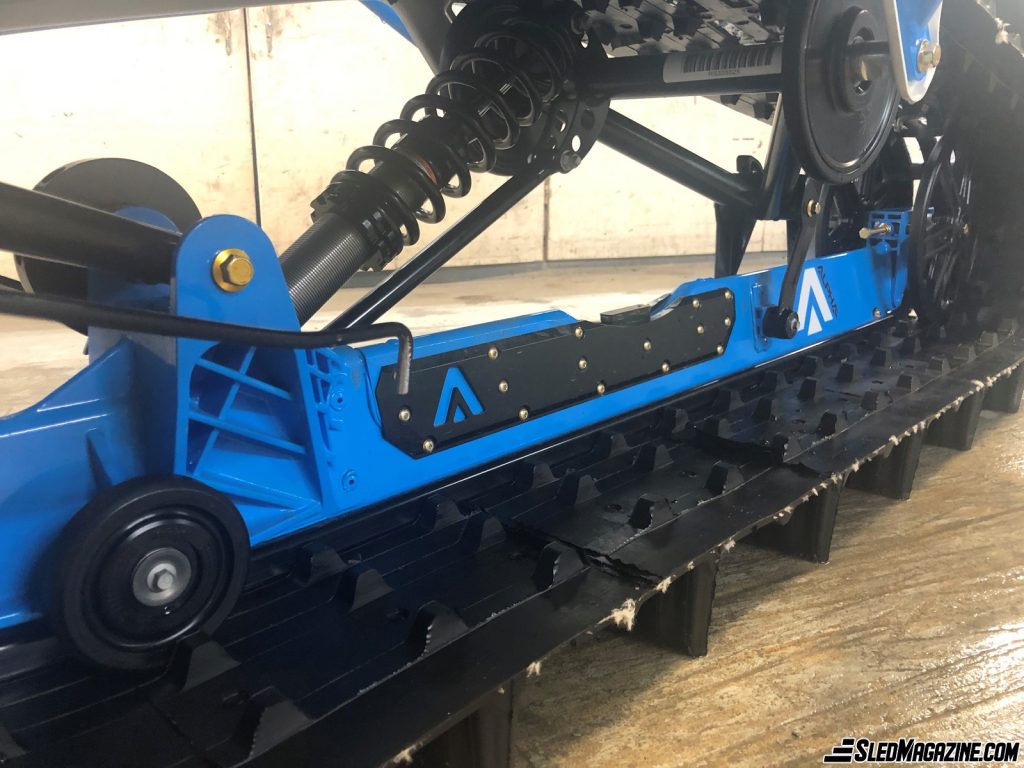
Alpha One Single Beam and Suspension
Alpha One single-beam rear suspension will continue to be the rear skid for the new Catalyst M600 mountain sled. The Alpha One suspension has been redesigned to increase travel and give better bottom-out protection. This was achieved by modifying the geometry and motion ratios on the front and rear shocks. Arctic Cat also modified the spring selection and valving for the rear suspension.
Additional Catalyst M600 Engineering Features
The M600 hood, side panels and seat all have been designed to have a toolless design. To remove the side panels and hood assembly, the rider will not need any tools. Simply turn a few three-quarter turn keepers, turn one latch in the very front of the sled and unplug the main wiring harness. It makes for very quick and easy access under the hood. The seat also has one three-quarter turn fastener in the back and a dirt bike seat-style hook for the front attachment point.
Arctic Cat also made the Catalyst tunnel in a one-piece design that can be replaced easier by drilling rivets that run up along the footwell area and under the gas tank. No more pulling all the parts off down to the bulkhead to replace the tunnel.
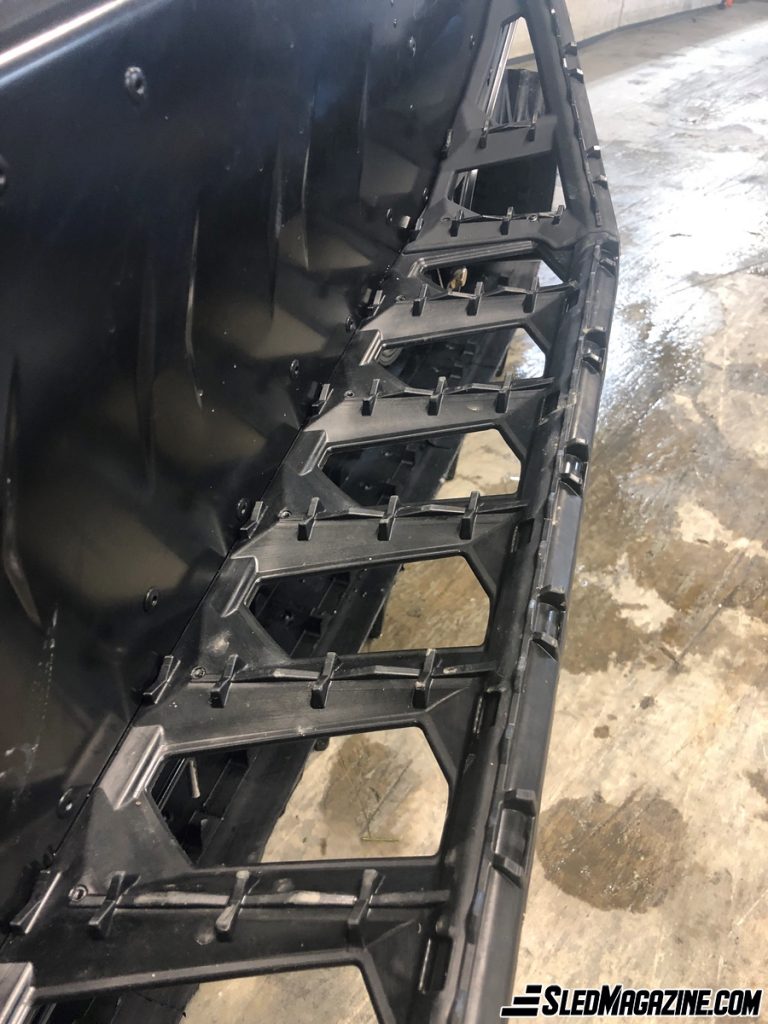
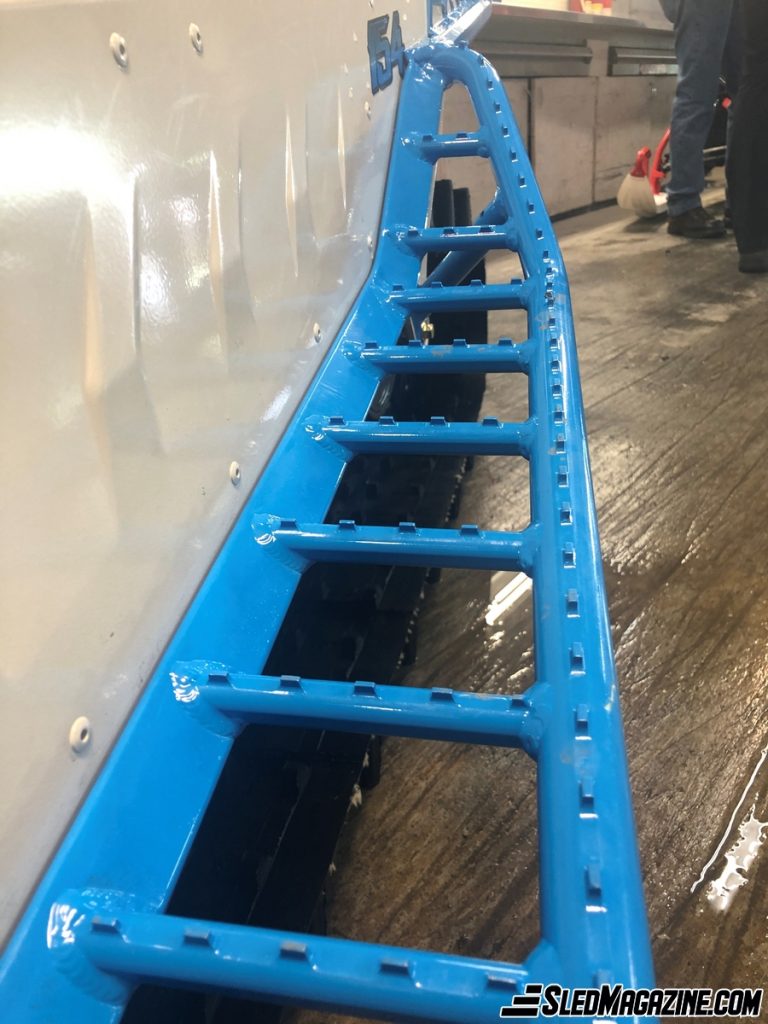
New Features
The new composite running boards and tube running board frame are also new features and are separately attached, so each part and piece can be replaced easily if they become damaged. The new composite running boards felt great, with a lot of traction when riding off-trail. They also seemed to stay relatively free of ice and snow build-up, which is always a plus. If you’re someone that wants to customize your sled, Arctic Cat also offers aftermarket painted aluminum running boards that also work well. The stock composite running boards only come in black and are not paintable.
Arctic Cat switched to a drive belt system across their Catalyst line not just on the M600 mountain platform. The new drive belt system cuts weight, improves responsiveness, helps with the track approach angle and is easy to service compared to the chain drive system.
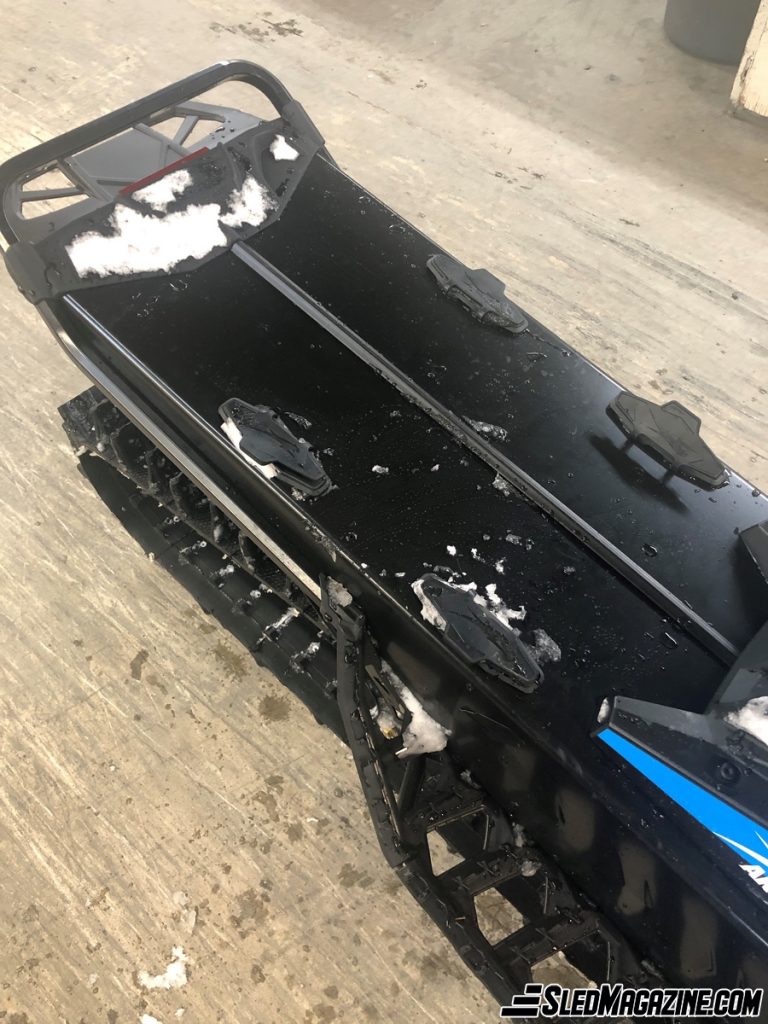

New with the Catalyst platform is the ATACH System, a seamlessly integrated accessory system designed to attach accessories to your sled. It’s a system that allows for a variety of bags and accessories to hook straight into the tunnel without the need for extra mounting hardware. Many of the bags and accessories for the ATACH system will also come with a key-locking system for added security.
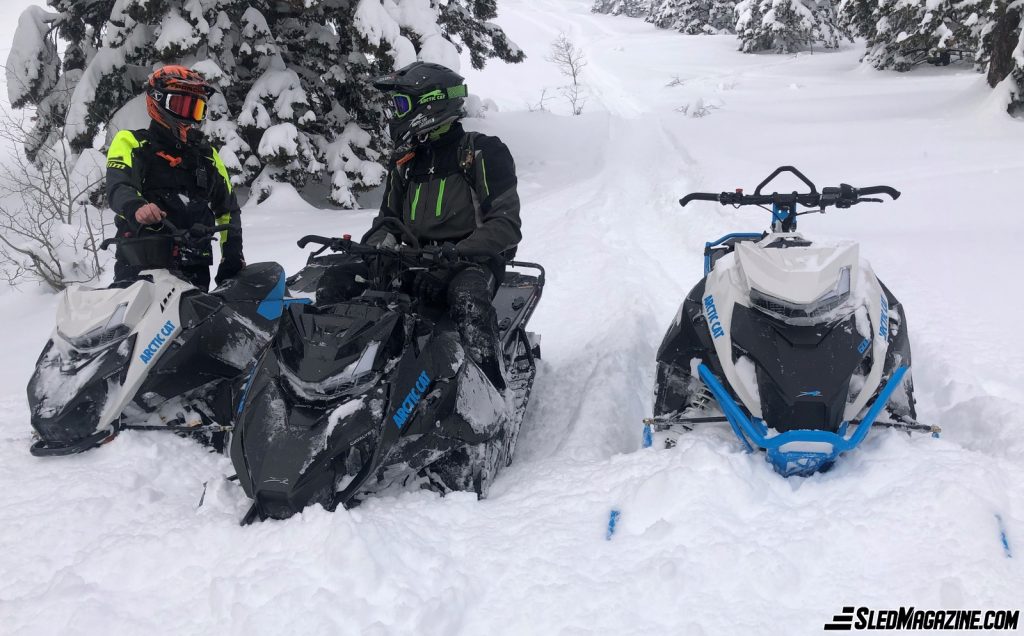
Arctic Cat’s new Catalyst M600 is an extremely well-balanced and agile sled that flows with the rider. It takes very little input to control and maneuver and almost feels like when you look where you want to go, the M600 will follow. It’s one of the most intuitive, fun, and playful sleds I’ve ridden, and I can’t wait to get back on one and go for another ride.
For more information and to get the latest updates about the New Arctic Cat Catalyst platform go to https://arcticcat.txtsv.com/snow/catalyst.

